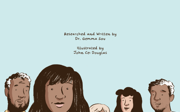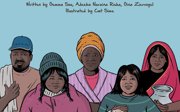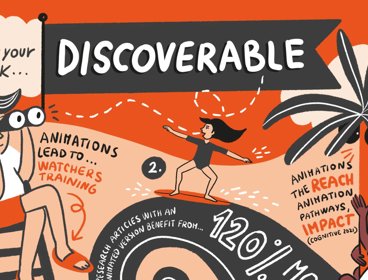By Gemma Sou, University of Manchester
In an anglophone context, comics that centre on and challenge mainstream ideas of political, social, or economic issues are known as ‘serious’ comics. Inspired by the idea that comics can deal with ‘serious’ issues. I, and other geographers, are increasingly translating our research into comics. Below I outline some opportunities for geographers working in the comic medium, including some dos and don’ts.
With the illustrator John Cei Douglas, I created the comic, After Maria: Everyday Recovery from Disaster in 2019, based on my one-year ethnography about Puerto Rican families’ recovery from Hurricane Maria. Later in 2022, I created a second comic, Everyday Stories of Climate Change, with the illustrator Cat Sims, and fellow geographers, Gina Ziervogel, and Adeeba Nuraina Risha. That story threads together vignettes from our research about the everyday ways that low-income families adapt to climate change in Bangladesh, South Africa, Bolivia, Puerto Rico, and Barbuda.

Taking readers to hidden moments and places
One of the most exciting things about working in the comic form is that you can take readers to everyday places and moments that cannot be captured in other media, such as participants’ inner thoughts, as well as experiences that are typically inaccessible to researchers. For example, in Puerto Rico, many people temporarily lived with extended family, often sleeping on mattresses in living rooms until their houses were reconstructed. However, several research participants explained that this made it difficult to be sexually intimate with their partners (see image 3). Such intimate moments are impossible to capture using audio-visual equipment. Yet, illustration allows readers to ‘go’ to some of the most intimate, mundane, and routine spaces that make up the landscape of research participants’ everyday lives. Thus, allowing you to create convincing worlds where your characters—or research participants—live.
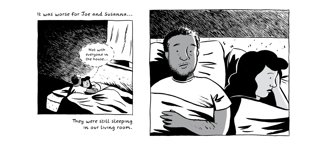
Visualising participants’ histories and aspirations, as well as possible futures
Comics can also allow you to visualise the histories, memories, aspirations, and even daydreams of research participants that are difficult to capture in other visual media such as photography or film. For example, in Bolivia I was able to visualise research participants’ dreams of constructing resilient (and beautiful) houses in their landslide-prone communities (see image 4). Visualising people as future-oriented agents allowed me to challenge persistent stereotypes about people in the so-called ‘global south’ as ‘static’ and ‘traditional’. Yet, comics can also allow you to visualise alternative and still possible future scenarios that could address some of the problems highlighted in your research. This can be an exciting and playful way for you to critically present potential solutions and policy recommendations that your research has revealed.
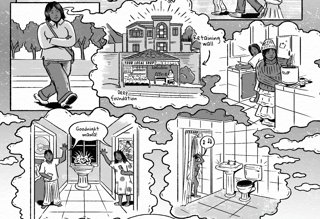
Participatory research with participants and artists
When creating a comic research participants can become active collaborators providing feedback on draft sketches, which de-centres the researcher as the chief ‘storyteller’. I found that when participants can ‘see’ representations of themselves they are more invested in providing feedback because it holds greater personal significance. And unless you’re confident with drawing you will inevitably work closely with an illustrator who will bring your script to life. Illustrators prefer scripts composed of ‘thick descriptions’ that include dialogue, narration, captions, thoughts, sound, smells, what is happening, whom we can see, the layout of each panel, the ambience, the emotion of characters, the time of day – as much detail as possible! As academics who are comfortable communicating in text, your initial script will probably rely too much on dialogue to drive the story. However, illustrators force you to strip back text to craft a visual argument where readers can use their imagination and wider knowledge to unpack the story’s images and text, which can feel less directive.
Final thoughts
Comics offer an exciting opportunity to communicate beautiful, sensitive, and compelling first-person narratives that can evoke in readers “a critical outrage grounded in empathy.” (Fall, 2014: 106). And as different publics continue to develop visual literacy, comics can be revelatory for understanding and representing the everyday, hidden, and multitemporal experiences of research participants.
Suggestions for translating your research into a comic
-
Read lots of comics and graphic novels! This will really help you to imagine your research as a visual story and to write the script.
-
Work with an illustrator who is familiar with comics’ unique language and syntax because being good at illustration does not automatically make you good at drawing comics.
-
Try to keep dialogue and captions to a minimum so that the images drive the story.
Further reading
-
Dittmer, J. (2010). Comic book visualities. Transactions of the Institute of British Geographers, 35(2), 222– 236.
-
Sou, G. (2023). Wiley Lecture 2022: Communicating climate change with comics: Life beyond apocalyptic imaginaries . Geographical Research.
-
Cameron, E. (2012). New geographies of story and storytelling. Progress in Human Geography, 36(5), 573– 592.
-
Fall, J. J. (2014). Put your body on the line. In J. Dittmer (Ed.), Comic book geographies (pp. 91– 108). Coll. Media Geography.
-
Peterle, G. (2021). Comics as a research practice. Routledge.
-
Sou, G., and Hall, S.M. (2023). Comics and zines for creative research impact: ethics, politics and praxis in geographical research. ACME: An International Journal for Critical Geographers.
How to cite
Sou, G. (2023) Graphic geographical research. Communicating research beyond the academy. Royal Geographical Society (with IBG) Guide. Available at: https://doi.org/10.55203/UFIC8093
About this guide
There’s a long tradition of geographers communicating research ‘beyond the academy’ - to policy, to publics, to young people, to school teachers - whether to recruit students, for career development, critical praxis and activism, or requirements of funders to document ‘impact’. Ten years ago we published the Communicating Geographical Research Beyond the Academy guide. It sought to bring together and share collective experience and learning, from within and beyond the academy. Today, there’s ever more opportunities and modes and media with which to do this. While many of the points made – about audience, about access, about brevity and the use of plain English – still stand, this collection covers these already familiar issues as well as bringing new perspectives to encourage readers to reflect on motives, means and methods and to illuminate examples of good practice.


